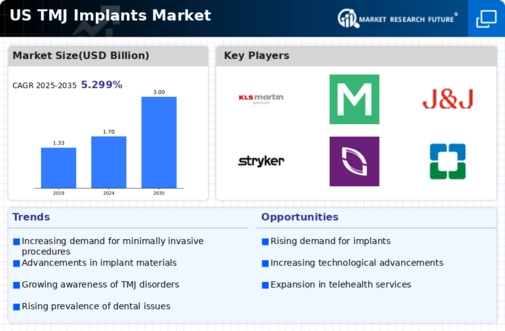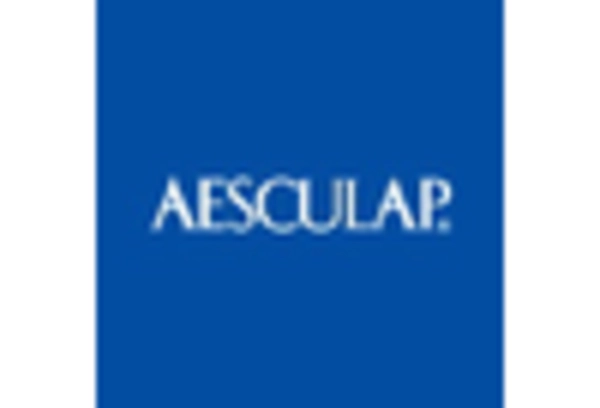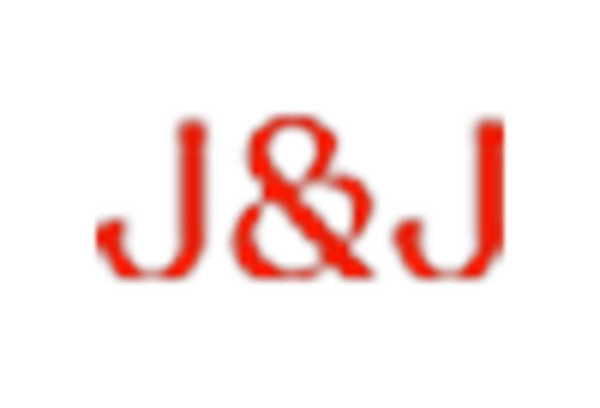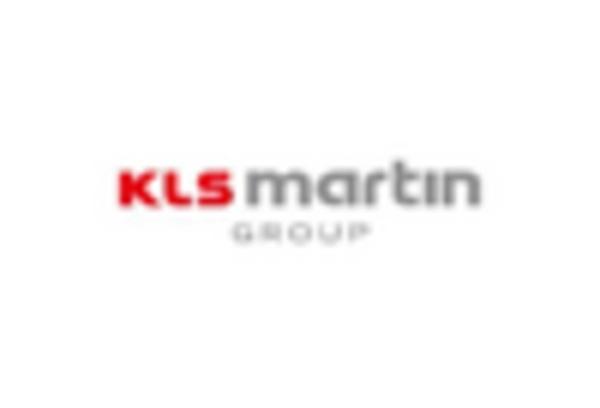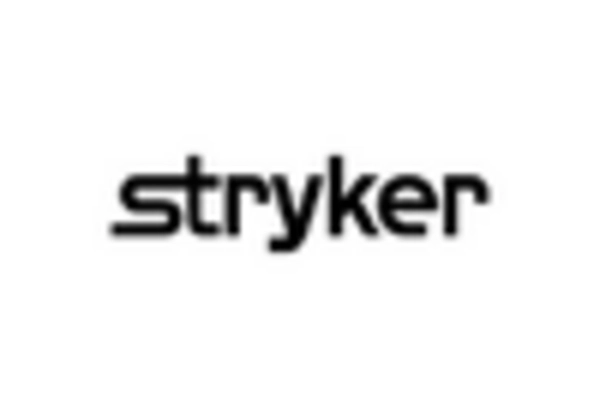Rising Prevalence of TMJ Disorders
The increasing incidence of temporomandibular joint (TMJ) disorders in the US is a primary driver for the tmj implants market. Studies indicate that approximately 10-15% of the population experiences TMJ-related issues, leading to a growing demand for effective treatment options. As awareness of these disorders rises, more patients seek medical intervention, thereby propelling the market forward. The tmj implants market is likely to benefit from this trend, as healthcare providers are increasingly recommending surgical solutions, including implants, for severe cases. Furthermore, the financial implications of untreated TMJ disorders, which can lead to chronic pain and associated healthcare costs, underscore the necessity for timely intervention. This growing recognition of TMJ disorders is expected to sustain the demand for implants, fostering innovation and expansion within the industry.
Advancements in Surgical Techniques
Innovations in surgical techniques and materials are significantly influencing the tmj implants market. Minimally invasive procedures, such as arthroscopy, have gained traction, allowing for quicker recovery times and reduced patient discomfort. These advancements not only enhance surgical outcomes but also expand the range of patients eligible for TMJ implant procedures. The tmj implants market is witnessing a shift towards more sophisticated implant designs that improve functionality and longevity. For instance, the introduction of biocompatible materials has shown promise in reducing rejection rates and enhancing integration with bone. As these techniques become more refined, the market is likely to see an increase in adoption rates, driven by both patient and provider preferences for less invasive options. This trend may lead to a more competitive landscape, with manufacturers striving to innovate and differentiate their offerings.
Increased Investment in Dental Health
The growing emphasis on dental health and its connection to overall well-being is driving the tmj implants market. Increased investment in dental care, supported by both public and private sectors, has led to enhanced access to specialized treatments for TMJ disorders. The tmj implants market is benefiting from this trend, as more dental professionals are being trained in advanced techniques for diagnosing and treating TMJ issues. Additionally, insurance coverage for dental procedures is expanding, making treatments more accessible to a broader population. This financial support encourages patients to seek timely intervention, thereby increasing the demand for implants. As awareness of the importance of dental health continues to rise, the market is expected to experience sustained growth, with a focus on comprehensive care that includes TMJ treatment.
Technological Integration in Healthcare
The integration of advanced technologies in healthcare is transforming the tmj implants market. Innovations such as 3D printing and computer-aided design are enabling the creation of customized implants tailored to individual patient anatomies. This level of personalization is enhancing surgical outcomes and patient satisfaction, which is crucial in the tmj implants market. Additionally, the use of digital imaging and simulation tools allows for better preoperative planning and improved surgical precision. As these technologies become more prevalent, they are likely to attract more healthcare providers to adopt implant procedures, thereby expanding the market. The potential for reduced surgery times and improved recovery experiences may further incentivize patients to consider implants as a viable treatment option. Overall, the technological advancements in healthcare are expected to play a pivotal role in shaping the future of the tmj implants market.
Growing Awareness of TMJ Treatment Options
The rising awareness of available treatment options for TMJ disorders is a crucial driver for the tmj implants market. Educational campaigns and patient advocacy groups are playing a significant role in informing the public about the symptoms and potential treatments for TMJ issues. This increased awareness is leading to more patients seeking consultations and exploring surgical options, including implants. The tmj implants market is likely to see a surge in demand as patients become more informed about the benefits of surgical intervention versus conservative treatments. Furthermore, as healthcare providers emphasize the importance of addressing TMJ disorders early, the market may experience a shift towards proactive treatment approaches. This trend could result in a more educated patient base, ultimately driving growth in the implant segment.


